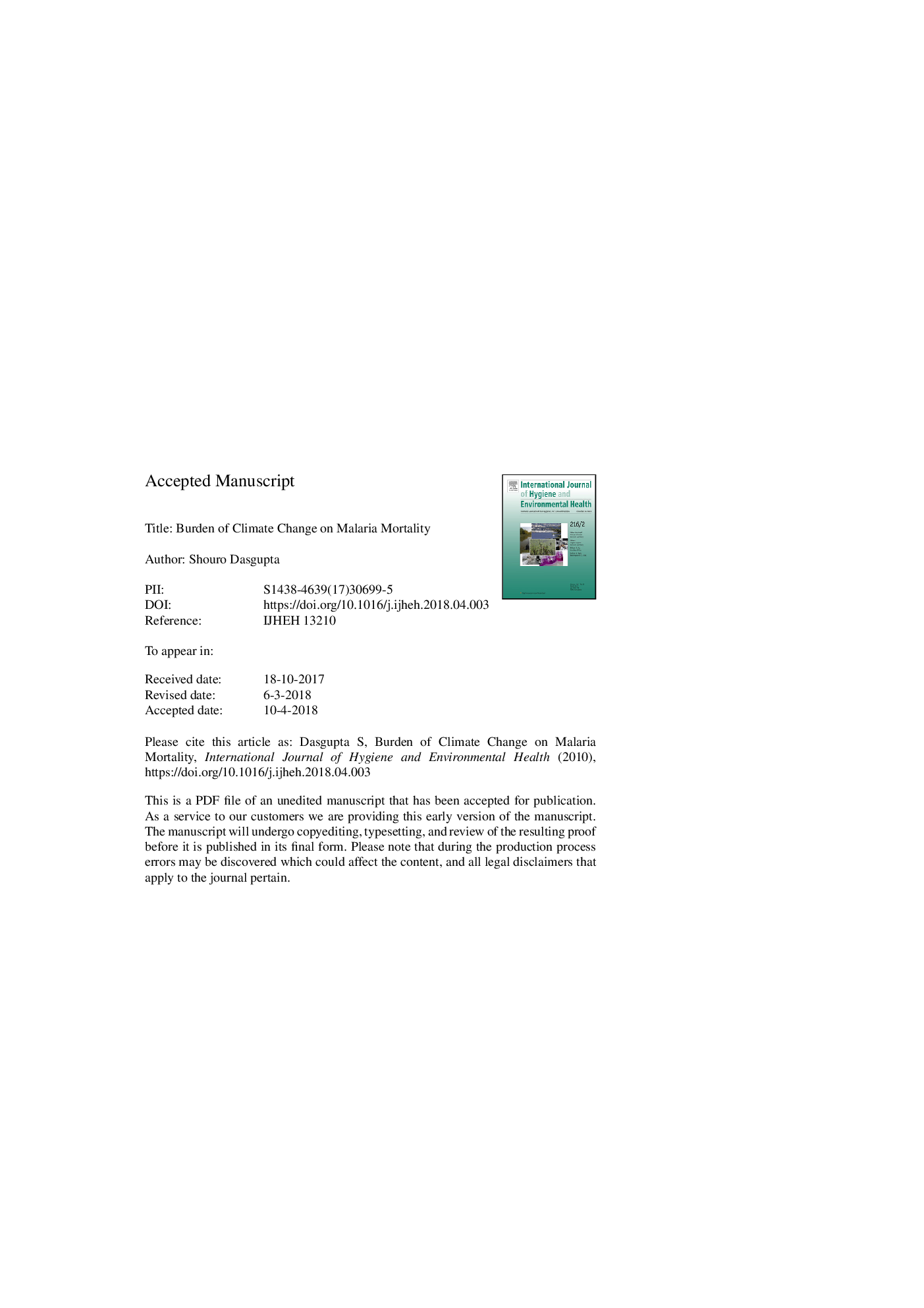| Article ID | Journal | Published Year | Pages | File Type |
|---|---|---|---|---|
| 8549529 | International Journal of Hygiene and Environmental Health | 2018 | 19 Pages |
Abstract
In 2016, an estimated 445,000 deaths and 216 million cases of malaria occurred worldwide, while 70% of the deaths occurred in children under five years old. Changes in climatic exposures such as temperature and precipitation make malaria one of the most climate sensitive outcomes. Using a global malaria mortality dataset for 105 countries between 1980 and 2010, we find a non-linear relationship between temperature and malaria mortality and estimate that the global optimal temperature threshold beyond which all-age malaria mortality increases is 20.8â¯Â°C, while in the case of child mortality; a significantly lower optimum temperature of 19.3° is estimated. Our results also suggest that this optimal temperature is 28.4â¯Â°C and 26.3â¯Â°C in Africa and Asia, respectively - the continents where malaria is most prevalent. Furthermore, we estimate that child mortality (ages 0-4) is likely to increase by up to 20% in some areas due to climate change by the end of the 21st century.
Related Topics
Life Sciences
Environmental Science
Health, Toxicology and Mutagenesis
Authors
Shouro Dasgupta,
